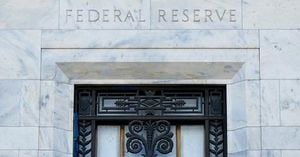Across the United States, the landscape for COVID-19 vaccine access is shifting rapidly, leaving many Americans uncertain about whether—and how—they’ll be able to get a booster shot this fall. As federal guidelines change under the leadership of Health and Human Services Secretary Robert F. Kennedy Jr., states are increasingly taking matters into their own hands, prompting a patchwork of rules and a fair amount of confusion at the pharmacy counter.
In Connecticut, the debate reached a crescendo this week as elected officials and disability rights organizations pressured Governor Ned Lamont to expand the state’s vaccine eligibility guidelines. Their calls come amid what many see as a period of federal uncertainty, with the U.S. Food and Drug Administration’s late August decision approving new COVID-19 vaccines for the fall—but only for people 65 and older and those at high risk for severe disease. Previously, vaccines had been available to anyone six months or older, a significant shift that has rippled through state and local health systems.
“We urge you to follow the lead of Massachusetts Governor Maura Healey and adopt and publicize a broader standard eliminating the need to prove such a condition and requiring all insurance plans to continue to cover vaccinations outside of the [Centers for Disease Control] guidelines,” attorneys from Disability Rights CT and the CT Council on Developmental Disabilities wrote in a letter to Lamont on Friday, September 5, 2025. According to reporting from local outlets, their plea referenced Massachusetts’ swift action: Governor Healey directed the state Department of Public Health to allow pharmacists to administer the new COVID vaccine to anyone five years of age or older, sidestepping the new federal restrictions. New York’s Governor Kathy Hochul followed suit with a similar directive the same week.
But in Connecticut, as of Friday morning, September 5, vaccine availability remained in flux. Rob Blanchard, a spokesperson for Lamont, said the state “will be preparing what we must to ensure no one’s health is jeopardized in Connecticut.” Yet, he stopped short of addressing the specific requests from disability rights groups or clarifying if people younger than 65 without underlying health conditions could expect to get vaccinated soon.
This uncertainty isn’t unique to Connecticut. In Arizona, as reported by ABC15, many pharmacies have the COVID-19 vaccine in stock, but booster shots are only being administered to those 65 or older or to people with underlying health conditions—and only with a prescription. “It could be a lot easier, or a lot more difficult, to get this vaccine than it is today, and it could also change whether your health insurance plan is going to pay for it or not,” said Will Humble, executive director of the Arizona Public Health Association. Arizona Governor Katie Hobbs expressed concern about the evolving guidance, telling reporters on September 3, 2025, “We’re going to look at the options we have to keep Arizonans safe.”
Meanwhile, in Ohio, the situation is a bit more open—but still muddled. According to Axios, as of September 8, 2025, COVID booster shots remain available without a prescription at many Ohio pharmacies. However, if you’re under 65, you may be required to disclose a high-risk medical condition before getting a shot. “I tried to book CVS and Walgreens appointments Friday and was required to list a condition, but Kroger still let me schedule without one,” reported Alissa, a health journalist, capturing the confusion many Americans are experiencing.
State responses are diverging sharply, reflecting both political differences and a desire to fill the vacuum left by federal retrenchment. In Massachusetts and New York, governors have acted decisively to broaden access. In Colorado and Pennsylvania, officials have passed rules to remove prescription requirements for COVID vaccines, making the process less cumbersome for residents. On the other hand, some states—such as Nevada, New Mexico, and Massachusetts (before the latest directive)—have seen vaccines become unavailable or require prescriptions for certain age groups, according to a recent map published by Axios.
This fall marks the first respiratory virus season without widespread federal COVID vaccine recommendations since the shots became available for general use. The FDA’s decision to limit eligibility has led to a patchwork of requirements at the state and pharmacy level. Pharmacies like CVS and Walgreens have implemented varied policies—some require proof of a high-risk condition, while others do not—adding to the public’s bewilderment.
Underlying these policy shifts is a broader debate about vaccine safety and public trust. Secretary Kennedy and other vaccine skeptics have publicly questioned the safety of COVID shots, but most medical experts continue to assert that the vaccines are both safe and effective, especially for those at risk of serious illness. Several major medical groups are still recommending the boosters for broad segments of the population.
With so much up in the air, attention is now turning to the CDC’s Advisory Committee on Immunization Policy (ACIP), which is scheduled to meet later this month. Their recommendations could have a significant impact on vaccine availability and insurance coverage across the country. “It could be a lot easier, or a lot more difficult, to get this vaccine than it is today,” Will Humble emphasized, highlighting the stakes for everyday Americans.
Some regions are moving toward greater autonomy in public health decision-making. On September 3, 2025, western state governors from California, Oregon, Washington, and Hawaii announced the creation of the West Coast Health Alliance, a coalition formed “to uphold scientific integrity in public health as Trump destroys CDC’s credibility,” according to California Governor Gavin Newsom. Connecticut, for its part, was among eight states that sent public health officials to a recent meeting about the possibility of forming a similar regional alliance. Brittany Schaefer, a spokesperson for the Connecticut Department of Public Health, confirmed that Commissioner Manisha Juthani and staff had attended a regional meeting in August to share strategies “at a time of federal health restructuring and cuts.”
Senate Majority Leader Bob Duff and Senate President Pro Tempore Martin M. Looney encouraged Connecticut officials to pursue these partnerships, noting, “Such an effort would allow states to make health recommendations and guidance directly to the public.” These regional alliances could play a crucial role in shaping vaccine policy if the federal government continues to pull back.
On Friday evening, Governor Lamont issued a public statement reaffirming Connecticut’s commitment to public health leadership. “The health and safety of Connecticut’s residents has always been a priority for our administration, and while the federal government may be taking an alarming turn in their vaccine and preventative care policies, Connecticut will continue to lead the nation on immunization,” Lamont said. “We will do everything we can to protect the public’s health and are already partnering with neighboring states. While Washington puts politics over health, we’ll be preparing what we must to ensure no one’s health is jeopardized in Connecticut.”
As the nation enters another COVID season, Americans are left navigating a maze of state directives, pharmacy rules, and insurance uncertainties. Whether the coming weeks will bring clarity or further confusion depends in large part on the next moves from both state leaders and federal advisory panels. For now, vigilance, flexibility, and a keen eye on local guidance remain the watchwords for anyone seeking a COVID-19 booster this fall.






